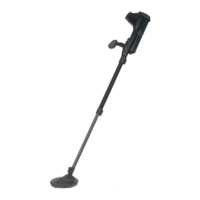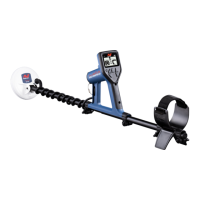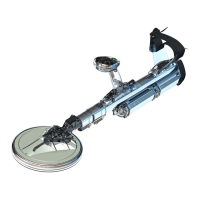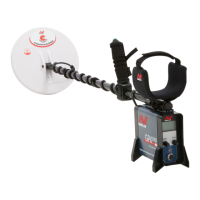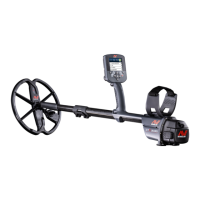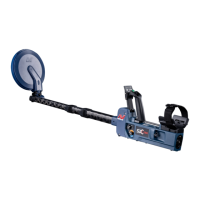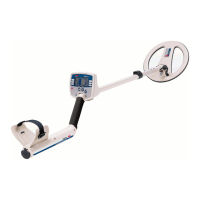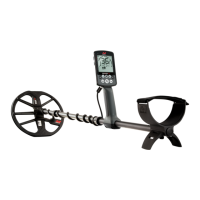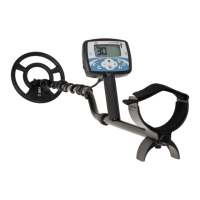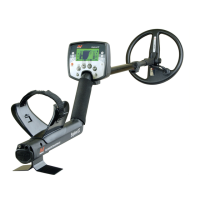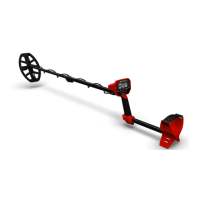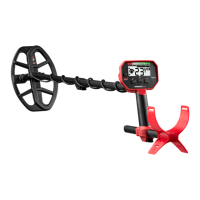CONTENTS
24
Target ID Number
TARGET ID NUMBER OVERVIEW
When a target is detected, the detector assigns a
Target Identification (Target ID) number to it based on
its conductive properties, and then classifies it as either
ferrous or non-ferrous based on its ferrous properties.
The Target ID is displayed on the Detect Screen for five
seconds, or until another target is detected.
Target ID numbers range from 0 to 99. These numbers
correspond to the horizontal axis of the ID Map.
MANTICORE's Target ID technology gives consistent,
repeatable Target IDs, giving you a high chance of
predicting what you have found before you begin digging.
For example, a US quarter has a Target ID of 88. This
means that each time a Target with an ID of 88 is detected,
there is a good chance that it will be a US quarter.
The Target ID number on the Detect
Screen, showing detection of a US
quarter with a Target ID of 88.
The Target Trace also appears in the
'88' position along the horizontal
axis of the ID Map.
Record the Target IDs of the objects you find.
Over time, you can use this information to
make your own Discrimination Pattern, making
detecting sessions more productive. See "Edit a
Discrimination Pattern" on page 52.
FERROUS TARGET IDS
When the Frequency is set to Multi-IQ+, ferrous targets
are assigned a conductivity ID on the same 0 to 99 scale
as non-ferrous targets. It is then classified as ferrous,
indicated by a low audio tone and accompanying red
Ferrous Indicator beneath the Target ID number. By having
separate ferrous indication, a greater Target ID resolution
for ferrous targets can be achieved, which is more useful
for relic hunting. It also has the benefit that targets
located on the Ferrous Limits boundary have more stable
Target IDs, so you can easily identify it as a single target
with uncertain ferrous/non-ferrous properties, as opposed
to multiple separate ferrous and non-ferrous targets in
close proximity.
The exception to this is in Single Frequency, where Ferrous
Targets are given a Target ID on a scale of 1 to 19 with
ferrous indication, based on the ferrous properties of
the target. This is because single frequencies cannot
accurately determine the conductive properties of a
ferrous target.
TARGET ID TYPES
Target ID
The Target ID number indicates how conductive
the detected target is.
Target ID with Ferrous Indication
The Ferrous Indicator is displayed when the
target has been classified as ferrous.
The Ferrous Indicator only appears when
All Metal mode is enabled.
Salt Indication
A Target ID of '00' and the Salt indicator
are displayed if using the Beach Modes in
extremely salty conditions.
The Salt indicator only appears when All Metal
mode is enabled.
No ID
The Target ID shows two large dashes when
there is no detection, or a weak detection
where an accurate ID number cannot be
determined. They also appear for targets
within the grey areas of the Discrimination
Pattern or Ferrous Limits.
